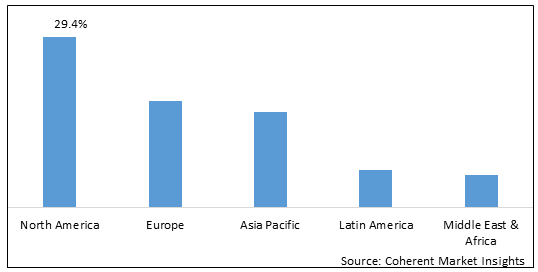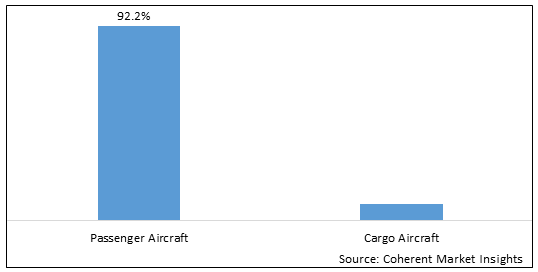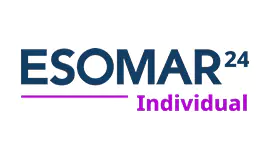The global hydrogen aircraft market size was valued at US$ 5.5 billion in 2022 and is anticipated to witness a compound annual growth rate (CAGR) of 22.4% from 2023 to 2030. Hydrogen aircraft market is projected to grow at a robust pace in the forecast period. The growth is attributed to the increasing focus on de-carbonization of transport vehicles, as traditional fuel emits huge volume of carbon. Increasing focus of market players on R&D activities to develop more efficient technologies and collaboration with other companies to scale up the production of hydrogen jet engines and fuel cells is also driving the market growth.
Global Hydrogen Aircraft Market: Regional Insights
North America is anticipated to gain major growth in the global hydrogen aircraft market over the forecast period. This is owing to rise in investments in development of infrastructure for hydrogen based economy. Along with this, government initiatives and launch by market players in the region are also driving growth of the global hydrogen aircraft market. For instance, in September 2020, Magnix and Universal Hydrogen announced partnership for the development of hydrogen-powered commercial aircraft. Such factors are thus driving the market growth in North America region.
Europe is anticipated to show substantial growth in the global hydrogen aircraft market over the forecast period. Rise in investments in research and development activities in countries such as Spain, France, and Germany; and increasing implementation of policies about the development of cleaner fuels for aviation industry are the major factors driving growth of the global hydrogen aircraft market in Europe.
Figure 1: Global Hydrogen Aircraft Market Share (%), 2022: Regional Insights

To learn more about this report, Request sample copy
Global Hydrogen Aircraft Market Drivers:
Growing global air passenger traffic to boost the market growth
With increasing traveling and disposable income among population across the globe is leading to rise in air passenger traffic. For instance, as per the International Civil Aviation Organization (ICAO), in 2019, the number of air passenger increased to 4.38 billion, which was a 3.65% higher compared to the year before. As per the International Air Transport Association (IATA) October 2018 statistics, the number of passenger count with the developing air transport projects is likely to increase to 8.2 billion in 2037. Thus, this factor is expected to drive growth of the global hydrogen aircraft market over the forecast period.
High suitability of hydrogen to fuel the market growth
With increasing air traffic, the need for replacing petroleum-based jet aviation fuel is growing rapidly. The new fuel will need to be environment-friendly and accessible at a global level. It will also have to meet the fundamental need of safety performance, economic considerations, and environment. Hydrogen fuel can cater all these needs and is a potential element to be used as a substitute for aviation fuel used in present time. Thus, this factor in turn is expected to fuel demand for hydrogen-fueled aircraft, which in turn is likely to boost growth of the global hydrogen aircraft market over the forecast period.
Global Hydrogen Aircraft Market Opportunities:
Lucrative initiatives from governments are expected to create growth opportunities in the global hydrogen aircraft market over the forecast period. Turning to hydrogen fuel from kerosene in aviation needs major support from governments around the world. Governments of many countries are formulating policies and roadmaps to promote infrastructure of hydrogen-based aviation in their countries, keeping reduction of global carbon emission as a primary goal. Thus, such initiatives are in turn creating growth opportunities in the global hydrogen aircraft market over the forecast period.
Development of infrastructures for hydrogen fuel is also generating lucrative opportunities in the global hydrogen aircraft market over the forecast period. Due to the stringent regulations regarding emissions by governments and restricted fossil fuel resources, the need for developing alternative fuels is growing all over the world for reducing the carbon emissions and creating environment-friendly transport. As a result, the number of transport modes with lower carbon emission such as hydrogen fuel cell vehicles is increasing. This factor is further creating growth opportunities in the market.
Hydrogen Aircraft Market Report Coverage
| Report Coverage | Details | ||
|---|---|---|---|
| Base Year: | 2022 | Market Size in 2022: | US$ 5.5 Bn |
| Historical Data for: | 2017 to 2021 | Forecast Period: | 2023 to 2030 |
| Forecast Period 2023 to 2030 CAGR: | 22.4% | 2030 Value Projection: | US$ 27.69 Bn |
| Geographies covered: |
|
||
| Segments covered: |
|
||
| Companies covered: |
Aerodelft, Aerovironment, Inc., Airbus S.A.S., Alaka’i Technologies, Hes Energy Systems, Pipistrel D.O.O., PJSC Tupolev, and The Boeing Company |
||
| Growth Drivers: |
|
||
| Restraints & Challenges: |
|
||
Uncover macros and micros vetted on 75+ parameters: Get instant access to report
Global Hydrogen Aircraft Market Trends:
Growing infrastructures of green hydrogen is a growing trend
The development of technology for building first ever zero-emission commercial aircrafts continues in the aerospace sector. One of the newest developments in the industry is green hydrogen that can be used for net-zero climate strategies. This new development will be an important factor in the future of aviation industry. As a result, several authorities are increasingly investing in green hydrogen. This trend is further expected to support growth of the global hydrogen aircraft market over the forecast period.
Rise in development of hydrogen-powered unmanned aircrafts is another trend
Unmanned aerial vehicles do not require human pilots and do not have passengers. These vehicles are sometimes also called drones. Drones can be partially or totally automated; yet they are mostly remotely piloted by humans. Several companies are focusing on development of such automated unmanned aircrafts that are powered by hydrogen fuel. This trend is further expected to grow in the global hydrogen aircraft market over the forecast future.
Global Hydrogen Aircraft Market Restraints:
High cost of production and management of hydrogen to impede the market pace
The extraction of gaseous form of hydrogen is mostly done from water through the process of electrolysis. This process requires to pass a high electric current in the water for isolating hydrogen and oxygen atoms. This process can be expensive due to the expenditure required for energy needs. Moreover, handling hydrogen in terms of volume and mass requirements is difficult. Liquid hydrogen possesses high volume-to-energy property, for which hydrogen aircrafts need a larger fuel quantity than conventional fuels. Thus, such factors are expected to hamper growth of the global hydrogen aircraft market over the forecast period.
Large amount of investments needed for certification and approval processes to hinder the market growth
As much the process of developing a hydrogen-fueled aircraft is complex, the certification and approval processes for these aircrafts are equally complex and require high amount of investments. The processes of certification and approval are stringent, as the aircrafts have to be adhering to all the regulations around safety, emission, and economic conditions. Thus, this factor further impacts adoption of these aircrafts, which in turn is expected to hinder growth of the global hydrogen aircraft market over the forecast period.
Figure 2: Global Hydrogen Aircraft Market Share (%), 2022: By Application

To learn more about this report, Request sample copy
Global Hydrogen Aircraft Market Segmentation:
The global hydrogen aircraft market report is segmented into Passenger Capacity, Application, and Range.
Based on Passenger Capacity, the market is segmented into Less than 100, 100-200, and More than 200. Out of which, Less than 100 is expected to dominate the global market over the forecast period and this is attributed to the growing development of hydrogen aircraft with 100 passenger capacity by various market players. Companies such as HES Energy Systems, Alaka’I Technologies, Pipistrel, Urban Aeronautics, Inc. among other are involved in development of hydrogen-fueled aircrafts having seating capacity between 1 and 100. Thus, with increasing adoption the segment is anticipated to show strong growth in the coming future.
100-200 segment is also expected to witness significant growth in the near future and this is owing to the growing investments by governments and market players to develop hydrogen aircrafts capable of occupying 200 passengers. For instance, in 2020, governments of Germany, Spain, and France announced to support Airbus S.A.S. for the development of its range of hydrogen powered aircraft consisting turbofan and blended wing body designs that offer passenger capacity of 100-200.
Based on Range, the market is segmented into Short Haul (<1,000 Km), Medium Haul (1,000-2,000 Km), and Long Haul (2,000+ Km). Out of which, Short Haul (<1,000 Km) is expected to dominate the global market over the forecast period and this is attributed to the rise in demand due to inexpensiveness of hydrogen-powered flights allowing passengers to travel short distances. With the need to reduce environmental impacts and being able to travel short distances at low cost, the demand for hydrogen-fueled aircrafts with the range of short haul is increasing. This in turn is expected to support growth of this segment.
Medium Haul (1,000-2,000 Km) segment is also expected to witness significant growth in the near future and this is owing to the increasing focus on development of medium haul hydrogen-fueled aircrafts by market players. Due to the substantial impact of this technology on climate, their demand is increasing across various region. The segment is likely to gain strong growth in the global hydrogen aircraft market over the forecast future.
Based on Application, the market is segmented into Passenger Aircraft, Cargo Aircraft. Out of which, Passenger Aircraft is expected to dominate the global market over the forecast period and this is attributed to the growing air passenger traffic leading to rise in demand for passenger aircrafts that are hydrogen-fueled. The focus of aircraft manufacturers around the world has increased on designing hydrogen based models for allowing a fair number of passengers in an aircraft. For instance, in September 2016, the first ever passenger aircraft, HY4 consisting engine powered by hydrogen fuel cell was introduced in Germany. Thus, such initiatives by market players are expected to drive growth of this segment.
Cargo Aircraft segment is also expected to witness significant growth in the near future and this is owing to the increasing cargo shipments around the world. The amount of fuel consumed by a cargo aircraft during its operations is high and it also emits high amount of harmful gases in the environment. Thus, demand for next-generation hydrogen fuel-based cargo aircrafts is increasing rapidly, further driving growth of this segment.
Global Hydrogen Aircraft Market: Key Developments
In September 2020, Airbus introduced ZEROe, a novel zero-emission concept aircraft. The company introduced three concepts; a blended-wing body design, a turboprop design, and a turbofan design.
In May 2020, Pipostrel, a Slovenian manufacturer of light aircraft announced completion of the first stage of an EU-funded project to develop a brand-new near-zero-emission regional aircraft concept.
In March 2022, Gloyer-Taylor Laboratories announced a joint venture with Hypoint announced to provide carbon composite liquid hydrogen fuel tanks to Hypoint to integrate it with its hydrogen fuel cell technology.
In May 2022, Airbus announced the plans to establish a facility in Filton, U.K. for creating hydrogen fuel systems to use in aircraft.
Global Hydrogen Aircraft Market: Key Companies Insights
The global hydrogen aircraft market is highly competitive. This is attributed to continuous launch of new technologies due to ongoing R &D and efforts by value chain participants. Moreover, key players are adopting various business growth strategies in order to expand their presence on regional as well as global basis. Some of the key players in the global hydrogen aircraft market are Aerodelft, Aerovironment, Inc., Airbus S.A.S., Alaka’i Technologies, Hes Energy Systems, Pipistrel D.O.O., PJSC Tupolev, and The Boeing Company
*Definition: An aircraft that generates power from hydrogen fuel is known as a hydrogen-powered aircraft. Hydrogen can either be singed in a stream motor or one more sort of gas powered motor, or can be utilized to drive an energy component to create power to control an electric propulsor.
Share
Share
About Author
Ameya Thakkar is a seasoned management consultant with 9+ years of experience optimizing operations and driving growth for companies in the automotive and transportation sector. As a senior consultant at CMI, Ameya has led strategic initiatives that have delivered over $50M in cost savings and revenue gains for clients. Ameya specializes in supply chain optimization, process re-engineering, and identification of deep revenue pockets. He has deep expertise in the automotive industry, having worked with major OEMs and suppliers on complex challenges such as supplier analysis, demand analysis, competitive analysis, and Industry 4.0 implementation.
Missing comfort of reading report in your local language? Find your preferred language :
Transform your Strategy with Exclusive Trending Reports :
Frequently Asked Questions
Select a License Type

Credibility and Certifications

860519526

9001:2015
27001:2022


Joining thousands of companies around the world committed to making the Excellent Business Solutions.
View All Our Clients